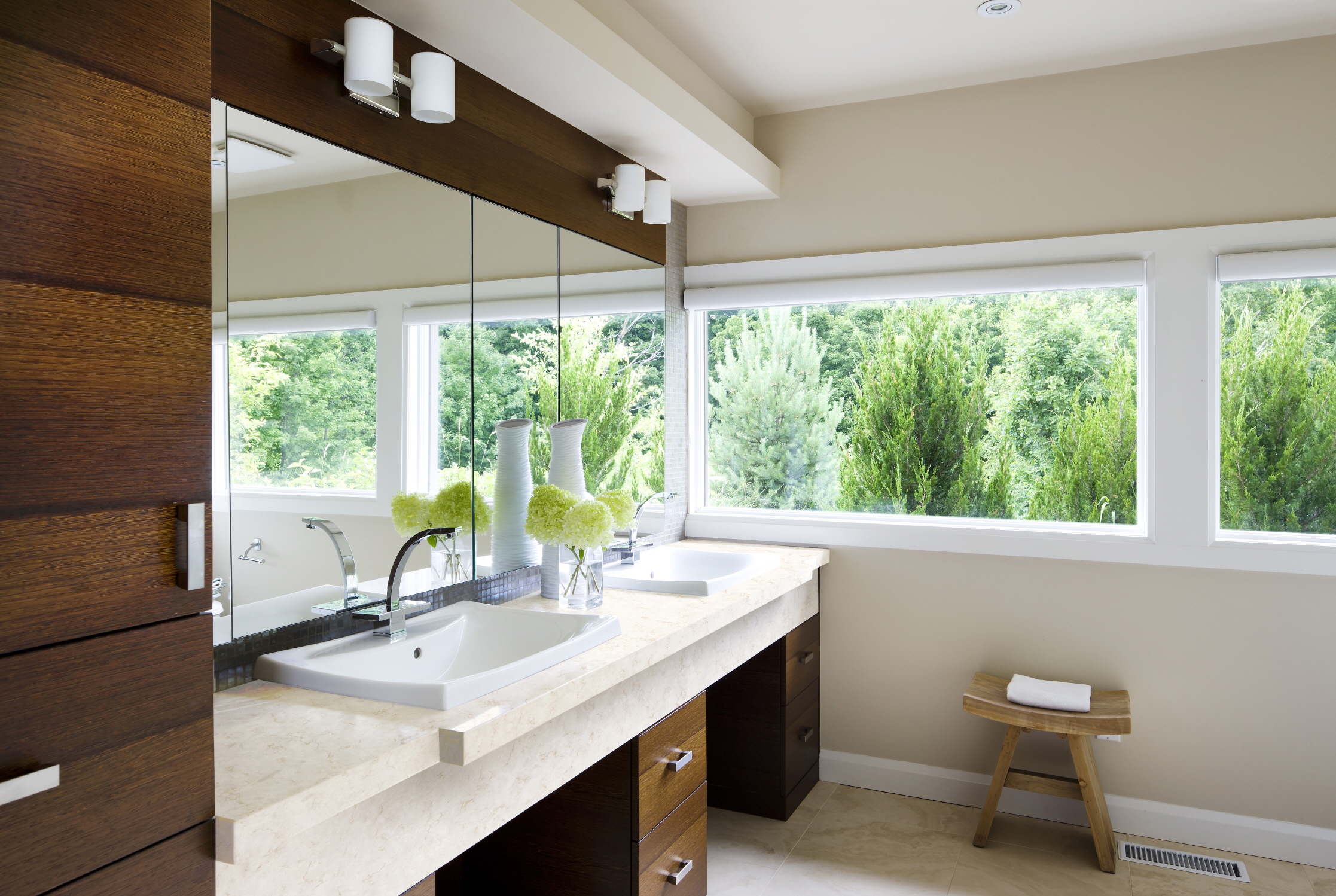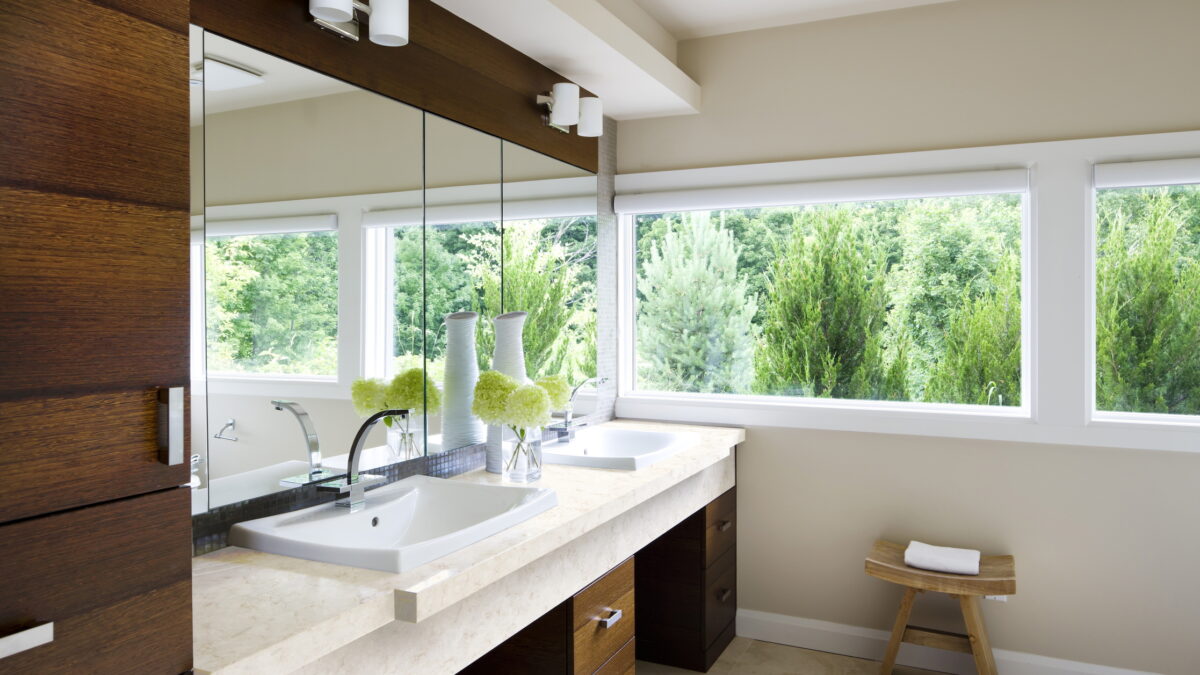Marble has long been favored for its classic beauty and elegance, making it a top choice for bathroom vanity tops. In this article, we delve into the advantages and disadvantages of marble as a material for vanity tops, highlighting its opulent aesthetic along with the considerations for upkeep. Furthermore, we will provide a side-by-side comparison with quartz, another popular option, to assist you in choosing the material that aligns with your personal taste, requirements, and financial plan.

The Advantages and Disadvantages of a Marble Bathroom Vanity Top
In the following segment, we’ll take an in-depth look at the benefits and drawbacks associated with opting for a marble bathroom vanity top.
The Advantages
Choosing a marble bathroom vanity top comes with several benefits:
- Aesthetic Appeal: The natural veining and distinct patterns in marble add a layer of luxury and timeless beauty to any bathroom setting. Such an elegant touch not only elevates the room’s design but also infuses it with a sophisticated ambiance.
- Heat Resistance: Unlike many other materials, marble boasts a high resistance to heat, making it an excellent choice for bathrooms where hot styling tools are frequently used. This feature allows homeowners to place heated items on the surface without fear of damage.
- Unique Characteristics: No two marble slabs are the same, guaranteeing that your bathroom vanity top will be one-of-a-kind. This uniqueness brings a special character to your bathroom and often becomes a highlight for guests.
- Durability of Natural Stone: Although it requires deliberate care, marble is inherently durable and capable of lasting decades with the right maintenance. Its resilience is particularly advantageous in areas of frequent use, such as bathrooms.
- Enhancement of Home Value: Marble’s association with luxury and high quality can make it an attractive feature for prospective buyers, potentially increasing your home’s resale value. This investment in marble underscores a commitment to elegance and quality.
- Variety of Colors and Patterns: With a wide selection of hues and designs, marble provides homeowners the flexibility to match their vanity top with the existing bathroom decor seamlessly. The variety ensures that everyone can find a marble that resonates with their personal style and bathroom theme.
The Disadvantages
Opting for a marble bathroom vanity top comes with its set of challenges:
- Porous Nature: Given its porosity, marble has a tendency to absorb liquids and stain, potentially leading to discoloration or damage if not meticulously sealed. However, with careful maintenance and routine sealing, these issues can be mitigated.
- Vulnerability to Scratches and Chips: Despite its overall durability, marble is susceptible to being scratched or chipped by sharp objects. To preserve its appearance, one must be mindful of not using abrasive materials or subjecting the surface to heavy impacts.
- Demanding Maintenance: The upkeep of a marble vanity top requires consistent cleaning with gentle, pH-neutral solutions and regular applications of sealant to ward off stains. This heightened level of maintenance may be seen as inconvenient by those with hectic lifestyles.
- Higher Cost: Marble typically comes at a higher price point compared to alternatives like quartz or laminate. The upfront cost may be prohibitive, especially for those working within a strict budget or undertaking a cost-sensitive renovation.
- Chemical Sensitivity: Exposure to harsh chemicals or acidic substances, including some cleaners, can mar the marble’s finish, leading to a loss of shine or even etching. Such vulnerabilities necessitate a careful selection of cleaning agents.
- Sensitivity to Temperature Changes: Marble’s susceptibility to fluctuating temperatures means it can crack if exposed to rapid changes in heat or cold. This characteristic requires caution, especially with the placement of extremely hot objects directly on the marble surface.
Which is better for bathroom vanity tops, marble or quartz?
Choosing between marble and quartz for bathroom vanity tops boils down to your preferences and priorities. Marble, with its timeless elegance and unique natural patterns, brings a luxurious feel to any bathroom. However, this beauty comes with the need for more attentive care due to marble’s porous nature and susceptibility to stains, scratches, and etching.
Quartz, being an engineered stone, offers practical advantages such as non-porosity, resistance to stains, and increased durability, all with reduced maintenance requirements. Though it lacks the natural veining characteristic of marble, quartz is available in a broad spectrum of designs, including options that closely resemble the look of marble.
For those prioritizing ease of care and lasting durability, quartz often emerges as the superior choice. Conversely, marble is the go-to for those who value unparalleled elegance above all and are committed to its upkeep. Those leaning towards quartz for its practical benefits may find LX Hausys’ VIATERA quartz bathroom vanity tops to be an excellent match for their needs.

